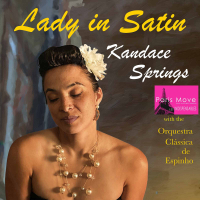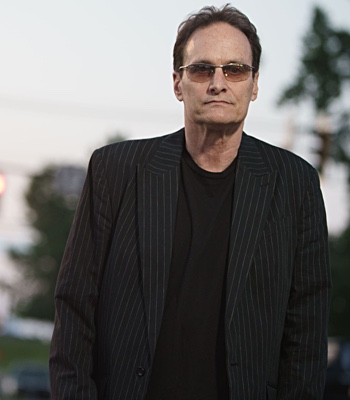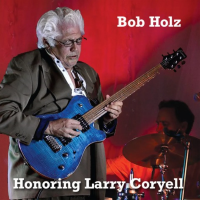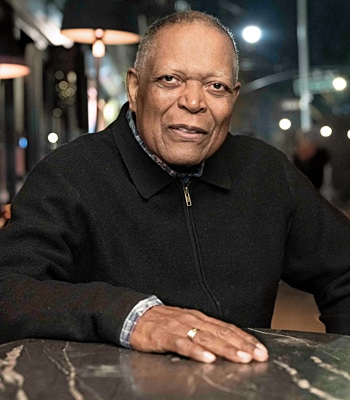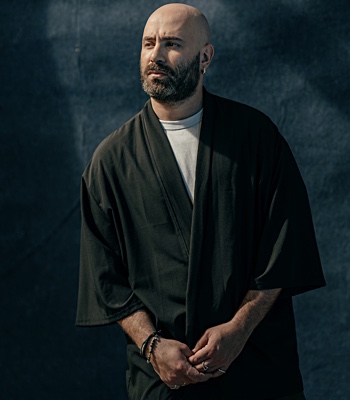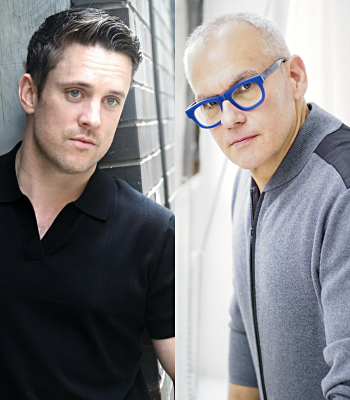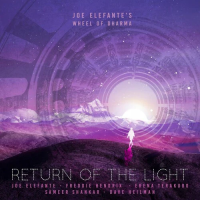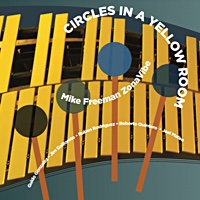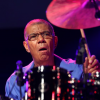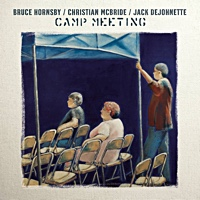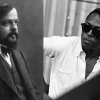Home » Search Center » Results: Arranger
Results for "Arranger"
Results for pages tagged "Arranger"...
Ray Ellis
Born:
In a career that began in the mid-1950s, Ray Ellis arranged the music for "Standing on the Corner" and "Moments to Remember" for the Four Lads; "Splish Splash" and "Dream Lover" for Bobby Darin; "Everybody Loves a Lover" for Doris Day; "Where the Boys Are" for Connie Francis; and "That Certain Smile" for Johnny Mathis. Ellis worked with producer Jerry Wexler at Atlantic Records arranging a number of R&B classics, including Ben E. King's "Spanish Harlem," Brook Benton's "There Goes My Baby" and the Drifters' "Under the Boardwalk." He also worked on some Ahmet Ertegun productions. Born in Philadelphia in 1923, Ellis took saxophone lessons as a teenager and played in dance bands in the Northeast before going into the Army in 1943
Results for pages tagged "Arranger"...
Malcolm Edmonstone

Born:
Malcolm Edmonstone is a jazz pianist and arranger, born in Perth, Scotland in 1980. In 1998 he moved to London to study with Simon Purcell and Pete Churchill at the Guildhall School of Music and Drama, where he is now professor and a key member of the jazz faculty. The ten years between then and now saw Malcolm gather an enormous range of experience, both as a practitioner and educator. He has worked in many high profile situations, often as musical director/associate. At the age of 20, Malcolm was called on by television MD Laurie Holloway to step in to cover the piano chair on a tour with his wife, the late jazz legend Marion Montgomery
Results for pages tagged "Arranger"...
Matso Limtiaco

Born:
Matso Limtiaco (b. 1963) majored in Music Education as an undergraduate. After a brief period teaching public school music, he earned his MA in music theory/composition at Washington State University in 1990. He spent six years teaching music at all levels from junior high band to university jazz ensembles, arranging music for his own groups and for a variety of local performers. Although he no longer teaches music full-time, Matso continues to be active as a freelance composer, arranger, and performer in the Seattle area. His baritone saxophone work has anchored the Emerald City Jazz Orchestra saxophone section since 1994, and the band's two recordings (“Alive and Swinging” and “Come Rain or Come Shine”) feature his charts
Results for pages tagged "Arranger"...
Nate Lombardi
Born:
As long as I can remember I’ve been attracted to music with funk and soul. It started with Stevie and expanded quickly to Hip-Hop. Now living in heart of Harlem I don’t have to look far; its all around me. I am a big fan of all the talented artists that have something to say, and give back. They're the performers that head charities, build schools, buy books and make a positive change. That is the road less taken, but it is the primary force that drives me. Also.... around 18 I was introduced to tap dancing and the ole movie musical. I was floored and challenged by the caliber of performer; this is when I was introduced this incredible music
Results for pages tagged "Arranger"...
Marty Sheller

Born:
Marty’s first instrument was snare drum which he took up at age 10, and even though he switched to trumpet a year later, his love of percussion has played a major role in his career. He attended South Side High School in Newark, NJ and in 1957 he began college at Columbia University in New York City where he met fellow student and pianist Myron Schwartzman who introduced him to another student at the school, alto saxophonist Bobby Porcelli. They have all remained close friends since those days, when Sheller and Porcelli could be heard practicing Charlie Parker–Dizzy Gillespie unison lines in Marty’s dorm room. Marty made his professional debut in 1958, playing a summer gig with Porcelli, Schwartzman, and drummer Wilbur Bailey at the Woodbine Hotel in the Catskill Mountains. As young adults, they were passionate about the emerging music of Miles Davis, Art Blakey, Horace Silver and John Coltrane, and that summer was spent transcribing and playing songs from their recordings. In the fall, Marty joined a band led by tenor saxophonist Hugo Dickens that played at dances, fashion shows and cocktail sips sponsored by black social clubs in Harlem on Friday and Saturday nights. The clubs hired bands that could play rhythm and blues as well as Latin, and there was a group of musicians in New York that had grown up listening to both kinds of music and knew how to play them authentically. There were three bands working that circuit; Hugo Dickens, Pucho, and Joe Panama. Many musicians who played in these bands went on to become very influential in the jazz and Latin–jazz scene, including drummers Pete “La Roca” Sims, Phil Newsum and Steve Berrios, pianists Rodgers Grant and Arthur Jenkins, bassist Bill Salter, trombonist Barry Rogers, alto saxophonists Bobby Porcelli and Bobby Capers, and Hubert Laws who doubled on tenor sax, flute, guitar and vocals. In 1959 Marty began playing with composer, arranger, timbalero, vibraharpist and pianist Louie Ramirez, and in 1960 they put together a Latin–jazz band that played jazz songs with a Latin rhythm section, but the band found little work. The group included conga player Frankie Malabe, whom Marty sites as an important early influence. He spent many afternoons at Malabe’s house on Simpson Street in The Bronx (across the street and a few doors down from the infamous police station nicknamed “Fort Apache”) studying African and Afro-Cuban rhythms. Malabe would arrange two seats facing each other, put on a record, and demonstrate the conga parts by playing them on Marty’s knees, explaining the time-keeping patterns and their relationship to the clave. The Sheller/Ramirez band, finding few places that would hire them, discontinued rehearsals until conga player Sabu Martinez hired the entire group, minus Malabe, to play on “Sabu’s Jazz Espagnole” (originally issued on Al Santiago’s Alegre Label), considered by connoisseurs of Latin-jazz to be one of the genre’s quintessential recordings. Marty was working with another timbalero-vibraharpist, Pete Terrace, when he first met Mongo Santamaria at a club in the Bronx in 1961. In November of 1962, Marty got a call from Santamaria, who had dropped the flute-and-violins lineup of his charanga band in favor of a Latin-jazz sound with a frontline of trumpet, alto saxophone and tenor saxophone. Three days before Marty began rehearsals, Mongo needed a piano player for a weekend gig in a Bronx club. Chick Corea had just left the band and Donald Byrd recommended a young pianist from Chicago, Herbie Hancock. Byrd told Herbie to play a song for Santamaria that Herbie had recently recorded. The song was “Watermelon Man,” and Mongo asked Hancock to bring the music to Mongo’s rehearsal the next day (Marty’s first rehearsal with Santamaria). One week later when the band first played the song in public at The Blue Coronet in Brooklyn, the people went wild. Pete Long, Santamaria’s manager, phoned Orrin Keepnews at Riverside Records with the news and persuaded the producer to come out to the club (on Thanksgiving night 1962) to hear the reaction for himself. The next week, Keepnews recorded the song for release as a single. Issued on Riverside’s Battle subsidiary, “Watermelon Man” became a Top 10 hit. It features a trumpet solo by Marty, not playing in his usual bop-imbued style but rather blowing simpler, funky lines inspired by Melvin Lastie’s solo from the Barbara George hit “I Know.” Marty played with Santamaria, as well as composed, arranged, and eventually served as musical director through 1968, when he put down his trumpet due to embouchure problems. He continued, however, working with Santamaria as an arranger, composer, conductor and friend until the conguero’s death in 2003. Among Santamaria’s four Grammy-nominated Latin-jazz recordings Marty produced was the album “Dawn,” which won a Grammy for Best Latin Recording of 1977. Marty’s awareness of clave counterpoint, combined with a thorough grounding in hard bop, made him one of the most sought after New York arrangers. His jazz informed charts greatly contributed to the success of the salsa music issued by Fania Records from the late 60’s through the late 80’s. Along with Louie Ramirez and Luis Cruz Junior, he can be considered one of the architects of the Fania sound. Besides scoring the 1989 hit “El Gran Varon” and many other recordings and productions by Willie Colon, Marty’s arrangements can be heard on recordings by George Benson, Ruben Blades, David Byrne, Jon Faddis, The Fania All-Stars, Larry Harlow, Giovanni Hidalgo, Hector Lavoe, Arturo O’Farrill’s Afro-Latin Jazz Orchestra, Manny Oquendo’s Libre, Sabu Martinez, Ismael Miranda, T.S. Monk, Idris Muhammad, Luis “Perico” Ortiz, Charlie Palmieri, Louie Ramirez, Tito Puente’s Latin-Jazz Ensemble, Mongo Santamaria, Shirley Scott, Woody Shaw, The Spanish Harlem Orchestra, Steve Turre and many others. Marty collaborated with Charlie Gerard on the book “Salsa – The Rhythm of Latin Music” and arranged a Clio Award-nominated Budweiser TV commercial featuring the singing of Jose Feliciano. He composed, arranged and produced the music for the PBS TV mini-series “Oye Willie” and did the same for the NBC TV (New York) Hispanic affairs program “Visiones.” He has conducted workshops at Baruch College in New York City at The Milt Hinton Jazz Festival with Tito Puente’s Latin-Jazz Ensemble and with Jerry Gonzales’ Fort Apache Band. On October 1, 2005 Marty participated as a panelist in a conference at Harvard University coordinated by The Cultural Agents Initiative, The Smithsonian Institution and The Americas Society entitled “The Jewish Latin Mix; Making Salsa.” That same evening, The Lincoln Center Afro-Latin Jazz Orchestra premiered his composition “Counter Punch” featuring Bobby Porcelli on alto sax. On July 24, 2006 Marty was the subject of an oral history interview collected by The National Museum of American History (a part of The Smithsonian Institute). The interview is a key objective of the Online Project For Latino Jazz Documentation and Education. On February 19, 2008 Sheller fulfilled a dream with the release of “Why Deny,” the first recording issued under his own name on his own label, PVR Records. He has a second CD completed entitled “Libre” and continues composing and arranging for future releases of The Marty Sheller Ensemble. In December 2017 Marty Sheller is honored at his Alma Mater, Columbia University. As Guest Artist in Residence, Marty’s compositions were featured in the performances by the student jazz ensembles, with whom he worked with in rehearsal and master class settings during the week. Ensembles were directed by Sheller associates Chris Washburne, Vince Cherico, Ole Mathisen & Don Sickler, to a packed house of students, friends, family and musical associates at Symphony Space on December 8th, 2017.
Results for pages tagged "Arranger"...
Edgar Avenir
Born:
College Level Professional at 21 Travelled abroad Session player Male Filipino
Results for pages tagged "Arranger"...
Caiphus Semenya
Caiphus Semenya - arranger, composer, bandleader, vocalist Caiphus Semenya is one of South Africa’s foremost musical directors and composers, dedicating a lifetime of work as a performer and arranger of African music. Semenya left South Africa in the 1960's, together with his wife, singer Letta Mbulu. Whilst in exile, he worked with compatriots Hugh Masekela, Jonas Gwangwa, Hotep Galeta, and Miriam Makeba amongst many others. He subsequently took up residence in Los Angeles, where his talent resulted in work with the top range of American artists and producers, and saw his compositions being performed by Cannonball Adderley, Harry Belafonte, Herb Alpert, The Crusaders, Lou Rawls, and Nina Simone, amongst others. Most notable have been Semenya’s regular collaborations with Quincy Jones
Results for pages tagged "Arranger"...
The NICE Jazz Trio
Born:
The NICE Jazz Trio is a quiet blending of vibes, jazz guitar and acoustic bass that delivers interesting and satisfying sound to listeners in a variety of sophisticated performance venues. Known for its delicate presentation of song form standards and established jazz themes, the NJT's music is appreciated for its easy-on-the-ears approach. Appearing at wineries, fine restaurants, coffee houses, country clubs and special events across northern Indiana, Ohio and Pennsylvania, the Trio maintains a busy performance schedule. The ensemble was honored to be nominated as Best Jazz Act in the 2000 Cleveland Music Awards. The NICE sound was first presented on its initial recording, "Introducing The NICE Jazz Quartet"(#NJT-010) several years ago
Results for pages tagged "Arranger"...
Chris Walden

Seven-time Grammy nominated German-born composer/arranger/conductor CHRIS WALDEN has scored more than 40 feature and TV films, and has written more than 1,500 orchestral and big band arrangements for artists including Michael Bublé, Aretha Franklin, Paul McCartney, SEAL, Stevie Wonder, Rihanna, Barbra Streisand, Josh Groban, and orchestras like the Chicago Symphony Orchestra, Los Angeles Philharmonic, Boston Pops. He has worked closely with producers David Foster, Tommy LiPuma, and Phil Ramone. He most recently served as lead arranger for the Academy Awards (Oscars®), he arranged for and conducted the Kennedy Center Honors and arranged the National Anthem for Jennifer Hudson's performance at the SUPER BOWL XLIII
Results for pages tagged "Arranger"...
Jerome Kern

Born:
Jerome Kern - pianist, composer (1885 - 1945) A colossus of the American Musical Theater, Jerome Kern was born in New York City on Jan. 27, 1885. His first music teacher was his pianist-mother. He later studied at the New York College of Music as well as in Europe. After working in the London theater, Kern returned to America, where the only work he could find was as a song plugger and pianist with a music publishing company. From 1905 to 1908 he was associated with a music company, rising to the vice presidency. He married Eva Leale in 1910, and they had a daughter. His first published score was an operetta, The Red Petticoat (1912)


